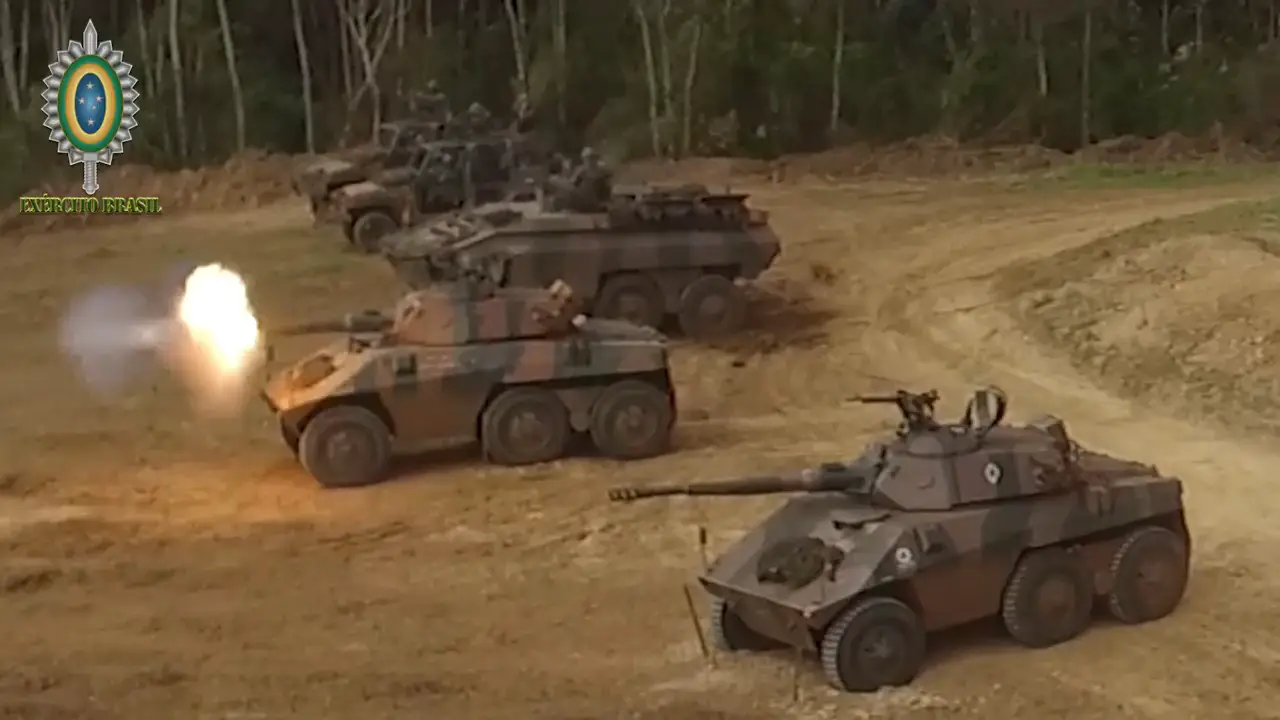
The EE-9 Cascavel (Rattlesnake) is a six-wheeled Brazilian armoured car developed primarily for reconnaissance. It was engineered by Engesa in 1970 as a replacement for Brazil’s ageing fleet of M8 Greyhounds. The EE-9 Cascavel has found favour with many armies due to its simplified design and use of components already ubiquitous to civilian industry. Its low cost next to comparable Western armoured cars makes it an attractive purchase to developing nations in particular. At the height of the Cold War, the strictly commercial nature of Engesa sales—devoid of any political supplier restraints—was also perceived as an acceptable alternative to arms from NATO and the Warsaw Pact. The vehicle was first fitted with the Greyhound’s 37mm main gun, and subsequently, a French turret adopted from the Panhard AML-90. Later models carry unique Engesa turrets with a Belgian 90mm Cockerill Mk.3 cannon produced under licence as the EC-90.

All EE-9 Cascavels have a similar layout—the driver is seated at the front of the vehicle and to the left, turrets are typically fitted above the centre, with motor and transmission situated at the rear. The Cascavel Mk II has a manual turret, but all later variants have electrically powered traverse. Cascavel Mk IIIs are equipped with an Engesa EC-90 90mm gun firing high explosive (HE), high explosive anti-tank (HEAT) or high explosive squash head (HESH) shells in cartridge form; a coaxial 7.62mm machine gun is also mounted to the left of the main armament. The EC-90 has an elevation of +15° and a depression of -8°. It is not stabilised and only mounts a rudimentary optical fire control system, which has been upgraded with a laser rangefinder in Brazilian service. Late production Cascavels were fitted with run-flat tyres and a unique central tyre pressure regulator accessible from the driving compartment.

The Cascavel shares many components with the EE-11 Urutu, its armoured personnel carrier counterpart; both entered production in 1974 and are now operated by over 20 nations in South America, Africa, and the Middle East. Rights to the design were also sold to the United States via the FMC Corporation. About 2,767 Cascavels and Urutus have been produced in the thousands for domestic use and exports, seeing action in many conflicts around the globe. before Engesa ceased operations in 1993. No other Brazilian armored vehicle ever had such success on the international market. Relatively simple and affordable, the EE-9 Cascavel came as a solution for emerging local powers to secure a fast response vehicle suited for flat, dry expanses where armored cars are more at ease than tanks.














